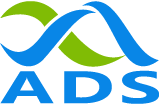As a gold standard, Sanger sequencing provides 99.99% accuracy and is the most commonly used sequencing method although NGS has dominated in the research field and is routinely used in many clinical labs. However, the limit in sensitivity has restricted the use of Sanger sequencing in some clinical diagnostics, such as companion diagnostics. In these cases, real-time PCR and derivatives are mainly used and recently the targeted NGS panels are also approved by the FDA for different cancer targeted therapy.
Sanger sequencing has great potential as a tool for companion diagnostics
If its sensitivity can be significantly improved, Sanger sequencing can be used in companion diagnostics as a powerful tool. Sanger sequencing is standardized and is widely available in standard clinical genomic labs. It does not require special training and bioinformatics expertise. The technique is still a good choice for detection of a single or a few mutations with short turn-around time and cost-effectiveness.
Recently, using our own Sanger sequencing reagents, we have validated the BRAF V600E-enrichment coupled Sanger sequencing method that is based on the XNA technique developed by DiaCarta. The mutation enrichment coupled Sanger sequencing, without adding any experimental steps, allows the Sanger sequencing’s sensitivity to reach 0.04% variant allele frequency (VAF) for BRAF V600E mutation. This is a significant improvement in sensitivity compared to the standard Sanger sequencing method (15 to 20% VAF) and other mutation-enriching methods reported (5%). With this sensitivity, the low frequency rare mutations with clinical significance can be easily identified and targeted therapy decisions can be correctly made with high confidence.
Mutation enrichment coupled Sanger sequencing vs. PCR and NGS
Compared with prevalent qPCR and recently developed droplet digital PCR (ddPCR), the sensitivity of mutation enrichment coupled Sanger sequencing is good enough for detection of low-frequency mutations. It is better than regular qPCR assays (1% or so VAF), but not as as good as ddPCR (0.001% VAF). However, these PCR methods can only identify the existence of the mutations, but not the nature of the mutation. That means, it does not tell for sure if the mutation is BRAF V600E, or V600K, or V600R, for instance. Knowing the nature of these mutations is important as these mutations have different effect on clinical prognosis for the patients.
NGS panels have recently gained traction among modern molecular diagnostics and two of the targeted NGS panels have been approved by the FDA for BRAF mutation detection. However, they are better for complicated cancers with multiple mutations. For caners like melanoma where BRAF V600E as a dominant disease causative agent, targeted NGS panels are not only more time-consuming, but also more costly. In this case, BRAF V600 enrichment coupled Sanger sequencing is a better choice because it is simple, fast and easy to use if the method is validated in clinical labs.
If you are interested in adapting mutation enrichment coupled Sanger sequencing assays in your clinical lab, consider using our cost-effective Sanger sequencing reagents as we have validated the BRAF V600 enrichment coupled Sanger sequencing protocol using our own reagents, including the Exo-Alp PCR Cleanup Mix, SupreDyeCylce Sequencing Kit and SupreDye XT Purification Kit. You can also read our application note on the detailed protocol.
